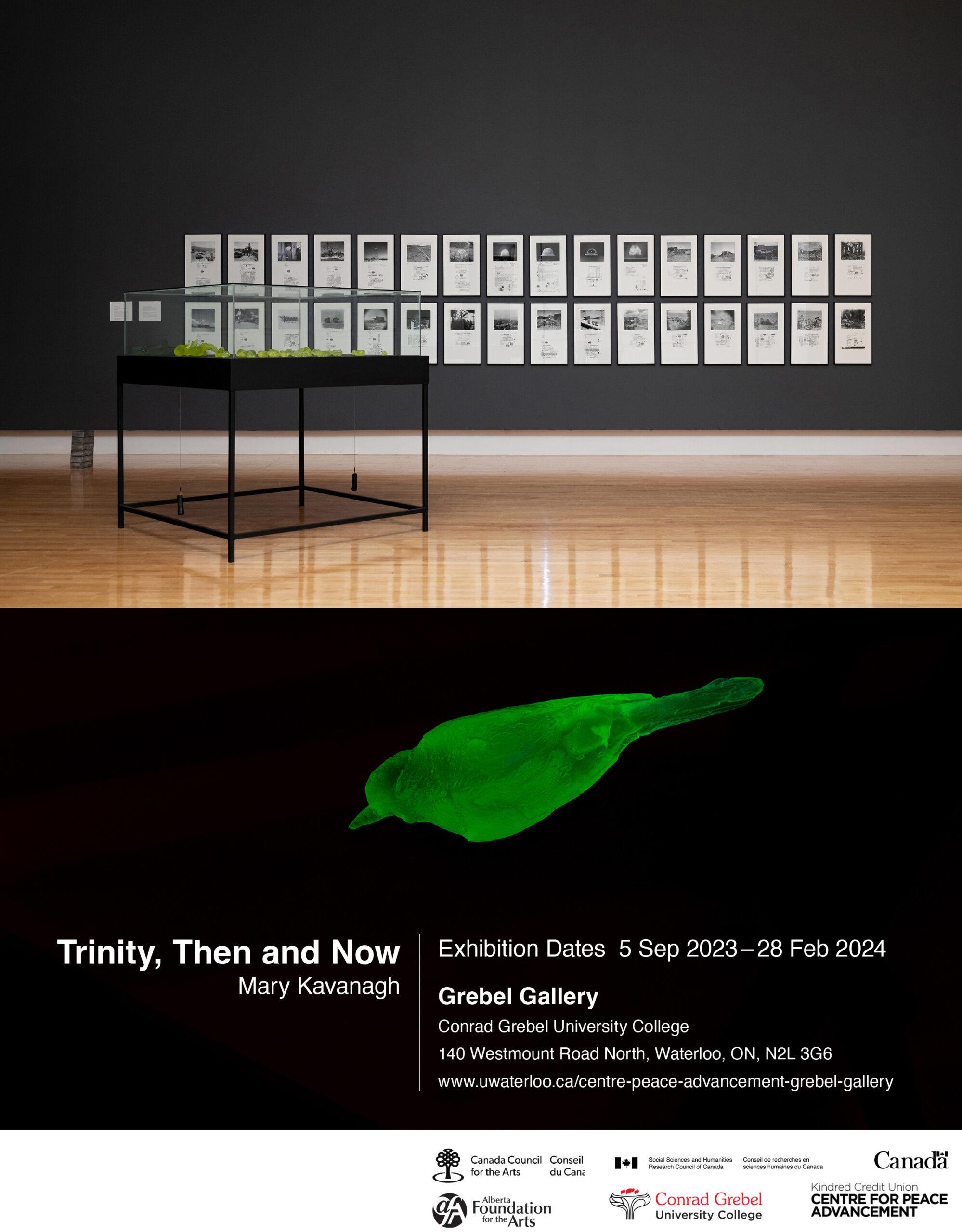5 September 2023 – 28 February 2024
Grebel Gallery, University of Waterloo
Waterloo, Ontario, Canada
Nearly eighty years after the detonation of the world’s first atomic bomb, the global threat dealt by nuclear weapons lurches perilously forward. Trinity, Then and Now brings into focus and proximity the grave impact of what is considered the first significant radiological event–the Trinity atomic bomb test on July 16, 1945 in the desert of New Mexico–with reflections on its continued ecological, physiological and psychological toll.
The Grebel Gallery is pleased to present a selection of three works from Mary Kavanagh’s solo exhibition, Daughters of Uranium, following her decade-long in-vestigation into the veiled history of nuclear armament. Derived from the chemical sciences, the term “daugh-ters of uranium” refers to the radioactive decay chain of naturally occurring Uranium (U-235 being the crucial element for sustaining a nuclear chain reaction) while evoking generations born into an uncertain future. Rich with scientific, literary, and historical references, the exhibition is conceptualized as a series of “chapters” that encourages a certain interpretive agency, while reflecting on the continuum of 20th and 21st century war.

Cultural anthropologist, Peter C. van Wyck describes the exhibition as a territorial archive in which “the archive as site shifts towards the archive as practice,” and one that “calls into question temporal and topographical notions of scale and proximity.” Using materials that are literally radioactive such as glass coloured with uranium oxide, or trinitite samples forged during the first atomic bomb blast, Kavanagh’s work radically challenges notions of contamination and containment, invisibility, violence, exposure and evidence. In her catalogue essay, “A Radioactive Domestic,” Jayne Wilkinson notes that Kavanagh structures the Nuclear as a totalizing concept rather than as a specific event or period. By not relying on the typical nuclear signifiers including photographs of enduring mushroom clouds, “Kavanagh’s approach is unique in the visual records of the atomic era…. [her] work frames a critique of militarism and military aesthetics through encounter and touch in order to understand how war impacts the body through generational histories.” In her film, Trinity 3, archival and contemporary footage are juxtaposed, bringing into alignment past, present, and future.
Mary Kavanagh is a visual artist, scholar, and educator whose work encompasses installation, video, photography, drawing, and sculpture. With a background in art history and critical theory, her art practice has been shaped by the aesthetic and social histories of representation and abstraction, by conceptualism and autoethnography. Kavanagh’s early work was largely concerned with embodiment and memory with projects focused on the intersection of personal and political narratives. More recent projects involve immersion in sites with complex or difficult histories, and utilize research-centric methods such as field work, community engagement, investigations of material evidence, and archival practices.
Kavanagh’s artwork is exhibited across Canada and internationally. With projects in the United States and Canada, her work has taken her to remote locations including active military bases, weapons testing and research facilities, industrial ranching operations, and sites of mining extraction and remediation, resulting in exhibitions that explore the boundaries of access to publicly held lands, institutions, and data.
Kavanagh is a Professor in the Department of Art at the University of Lethbridge, and Tier I Board of Governors Research Chair (2020-2025). Her work is supported by grants from the Canada Council for the Arts, the Alberta Foundation for the Arts, and the Social Sciences and Humanities Research Council of Canada. In 2007 she was Visiting Professor at Hokkai-Gakuen University in Sapporo, Japan, and in 2018 she was appointed Associate Member of the Documentary Media Research Centre (DMRC), School of Image Arts, Toronto Metropolitan University. In 2021 she was elected Fellow of the Royal Society of Canada, Academy of Arts and Humanities.

